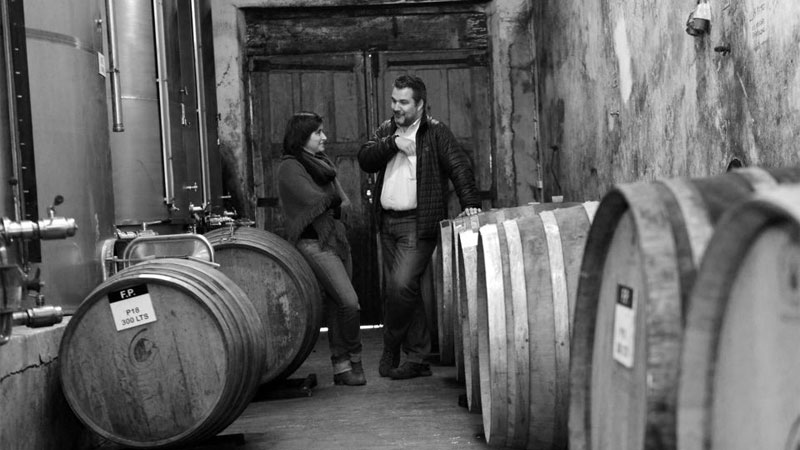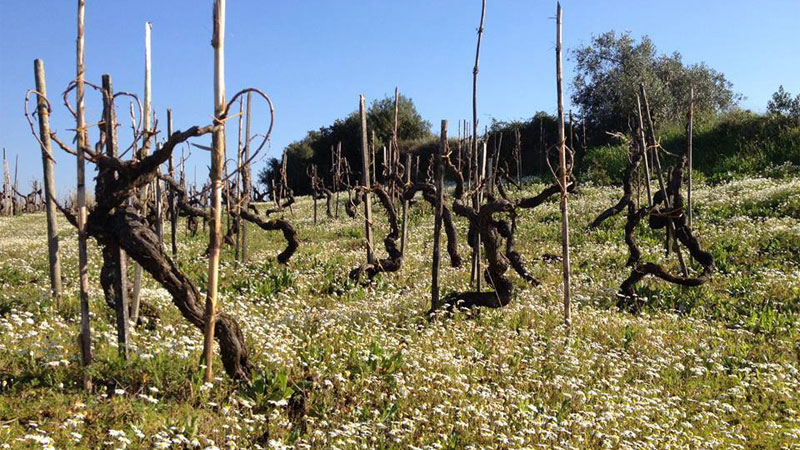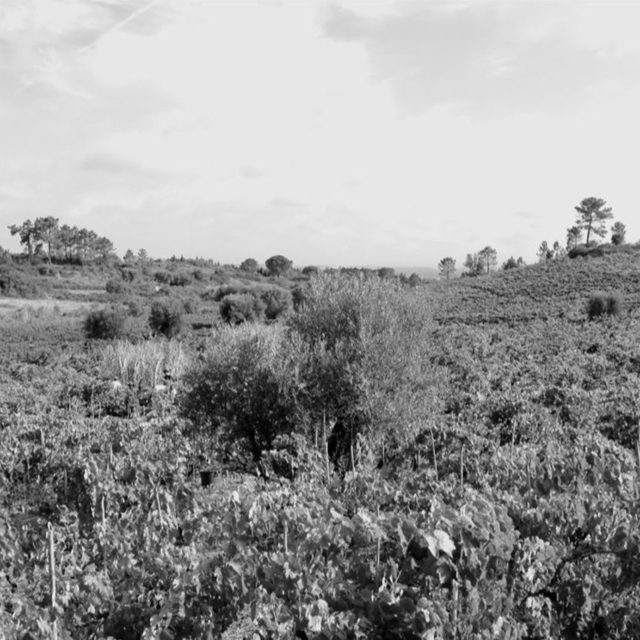Filipa Pato cups a cluster of grapes in her hand as a light rain falls on one of the oldest plots in her winery. “I feel very privileged to have the chance to work in these amazing vineyards,” she says.
Her vineyard in Barraida, Portugal spans 16 hectares of pre-phylloxera vines estimated to be 130 years old. She and her husband, William Wouter, bought the land from an elderly man who inherited it from his grandfather.
“We work biodynamically which stimulates the biodiversity of the soil,” she says. “We have a lot of plants coming back from the grandparents’ time, like asparagus, fennel, oregano, and wild onions.”

A lot of those plants find their way into Wouter’s kitchen. A Belgian-born chef, he owned a successful restaurant in Antwerp before deciding to focus on Portugal. The restaurant is on the ground floor of their home, and offers food and wine pairings that change with the season.
Wine has always been part of Portuguese culture. Most meals are accompanied with a glass or two of often-local wines, sold by the carafe for a few euros. But it is only recently that premium wines are catching on in the country, Pato says.
“The young generation travel more and they are open to learn and know more about other wine regions,” she says. “Our region is a little like Burgundy — small plots — a few thousand square meters there, different owners — it’s very small productions.”
Pato says they keep the amount of visitors to the winery relatively small and only once a week. Still, esteem for her eponymous label is growing globally. 3B Rosé Sparkling, made with Baga and Bical grapes, is especially popular.
Most Filipa Pato wines retail for $15 to $50. She says that 85 percent of the wine is exported to 30 different countries.
International drinkers are typically familiar with regions like Douro and perhaps Alentejo. Smaller regions like Barraida are getting better known, however, thanks to Portuguese sommeliers who are becoming more important in the domestic wine market.
“They are introducing the smaller areas which are very authentic like Barraida, Dao, Colares, which are unique and you need a sommelier to explain them and to pair it with the right food,” Pato explains.
Pato comes from a winemaking family that has been growing grapes and producing wine in the area since the 1800s. Her father, Luis Pato, is considered the father of the Baga grape and the man who put the Barraida region on the map.
Like her father, she studied chemical engineering before becoming a winemaker. She first worked for her father, then in Australia, and in Bordeaux. Today, Filipa Pato produces 80,000 to 100,000 bottles of wine annually.
In person, Pato is short and energetic, with a ready laugh, and seems happiest in the vineyards. Her philosophy is to intervene in the winemaking process as little as possible, to produce “wines without makeup,” she says with a smile.
There are only three biodynamic wineries in Barraida, she says, although she hopes to see more. She believes that biodynamic wines taste better and are healthier. She also has a biodynamic vegetable garden at her home, for both her own two sons, and for guests at the winery.
“My kids come home and they eat tomatoes and strawberries right from the garden,” she says. “It’s a fantastic way to raise your kids.”

Scattered among the vineyards of Baga grapes are decades-old olive trees. It means that harvesting must be done by hand rather than machine, but, she says, the vines and olive trees work together to enrich the soil.
“The trees protect the vineyard from the sun, and they attract the bees during the spring,” she says. “There is a lot of interaction between them.”
In 2019, some of her vineyards had frost for the first time in many years, Pato notes. The vineyards with the olive trees, however, did not get frost and she is sure the two things are related.
Pato is always trying to innovate. On a small plot she calls the missaoa (mission), she celebrates the specific terroir by making just one cask, or 500 bottles. The first cuvée from this plot debuted in 2015.
“This vineyard was abandoned and it took a lot of effort to recover it,” she says. “It’s east-facing to the mountain, which keeps the Atlantic breeze in the vineyard longer.” The harvest for sparkling wine is usually in August, she says, and in September for the red and white still wines.
Wine tourism to Portugal has increased dramatically in the past few years, although most is to Porto and the Douro Valley. Many quintas (Portuguese for wine estate) have invested recently in facilities to house tourists whom they hope will come and stay overnight in the region.
Portuguese people do not seem to have a tradition of visiting wineries, Pato says. But wine tourism for overseas tourists is booming, and Pato hopes at least some of them will come to Barraida.
“The best way to learn about Portuguese wines is to come here,” she says. “You realize the biodiversity, and the different aromas. It’s a unique and wild place. We have a lot of animals around the vineyards — rabbits, foxes, wild boars, birds. It’s fantastic. You need to see it.”
